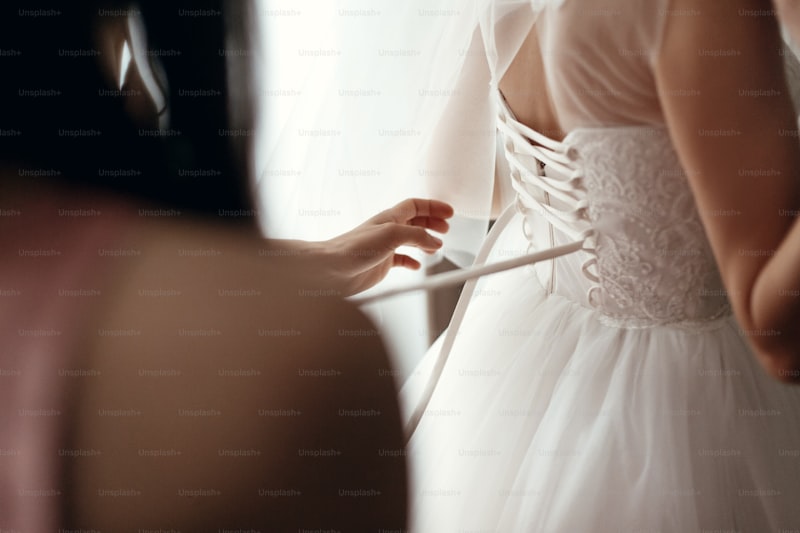Mastering the Art of Coordinating with Bridal Attire: A Complete Guide
Introduction to Coordinating with Bridal Attire
Planning a wedding involves numerous details, and one of the most critical elements is the attire chosen for the bride and her bridal party. Coordinating with bridal attire is essential for achieving a cohesive look that reflects the couple's style and the wedding's overall theme. This guide will delve into everything you need to know about coordinating bridal outfits, touching on colors, styles, and accessories. We will also provide practical tips, advice, and frequently asked questions related to this exciting aspect of wedding planning.
Importance of Coordinating with Bridal Attire
Coordinating wedding attire is more than just picking complementary colors; it creates visual harmony and enhances the overall aesthetic of the celebration. The bride is usually the center of attention, and how her outfit relates to her bridal party, groom, and wedding theme can transform an average wedding into a stunning event. It’s also about practical considerations such as comfort, budget, and the preferences of all individuals involved.
Key Elements to Consider When Coordinating with Bridal Attire
| Element | Description |
| Color Palette | Choose a cohesive color scheme that complements the bride's gown and reflects the wedding theme. |
| Fabric Selection | Ensure all outfits are harmonized through matching or complimentary fabric types. |
| Style Consistency | Pick styles that fit the overall vibe of the wedding, whether it be formal, casual, vintage, or modern. |
| Accessorizing | Choose accessories that tie the outfits together without overshadowing the bride's attire. |
| Seasonal Considerations | Account for the season when selecting fabrics, colors, and styles to ensure practicality and comfort. |
Choosing the Right Color Palette
The color palette sets the tone for the wedding. When coordinating with bridal attire, consider hues that complement the bride's dress. If the bride opts for classic ivory, shades like blush, sage green, or navy blue could work wonderfully for the bridesmaids. For a beach wedding, softer pastels or vibrant tropical colors might be a preferable choice, whereas, for a winter theme, rich jewel tones like emerald green or royal blue can create a spectacular contrast.
Utilize color swatches and samples to visualize how the colors will look together, both in photographs and in natural lighting. You can also use online tools and apps that help in visualizing color combinations to enhance your decision-making process.
Selecting the Appropriate Fabric
Fabric choice is crucial when coordinating with bridal attire. It not only affects the look and feel of the outfits but also impacts their comfort level. For summer weddings, lightweight fabrics like chiffon and linen are ideal, while heavier materials such as satin and velvet are better suited for winter weddings.
Make sure to communicate with vendors regarding fabric selections and ensure each outfit’s fabric complements one another. Consider the drape and flow of each fabric to create a unified look that works in harmony with the bride's attire.
Maintaining Style Consistency
A common mistake is to let each bridal party member select their own style without maintaining consistency. While individual expression is important, it's crucial to ensure that all outfits align with the wedding's overall style. For instance, if the bride chooses a bohemian gown, it would be fitting for the bridesmaids to wear flowing dresses instead of structured gowns.
Discuss style options as a cohesive group early in the planning process. This way, everyone feels included, and you can avoid any last-minute disagreements.
Accessory Selection to Tie It All Together
Accessorizing can either enhance a look or cause it to clash. Focus on coordinating with bridal attire by selecting accessories that complement rather than overshadow the primary outfits. The bride might choose a statement necklace; therefore, the bridesmaids should opt for simpler pieces. Additionally, color-coordinated accessories like shoes and handbags can elevate the overall aesthetic.
Seasonal Considerations in Coordinating Attire
The season plays a significant role in coordinating bridal attire. Summer weddings often feature light fabrics and vibrant colors, while winter weddings might lean toward deep hues and heavier fabrics. Make sure that the attire selected resonates with the season’s vibe, as comfort is key for all participants. Consider breathable fabrics for summer to avoid discomfort during outdoor ceremonies, and warmer layers for winter weddings.

Frequently Asked Questions on Coordinating with Bridal Attire
How can I include non-traditional elements in bridal attire coordination?
Including non-traditional elements can be achieved by incorporating unique colors or styles that reflect the couple’s personalities. Consider using unconventional materials like denim for a casual wedding or bold prints for a more relaxed affair.
Should the groom and groomsmen match the bridal party?
The groom's attire can coordinate with the bridal party but doesn’t necessarily need to match completely. Opting for a color that complements the bridesmaids' dresses can tie the overall look together without being overly uniform.
Can I mix and match different styles within the bridal party?
Yes, mixing styles can create a more personalized look while maintaining a color palette. Ensure that the chosen styles still hold some connection, either through complementary fabrics or shared design elements.
Conclusion
Coordinating with bridal attire is an essential aspect of wedding planning that enhances the celebration's beauty and unity. By choosing a solid color palette, selecting appropriate fabrics, maintaining style consistency, and carefully accessorizing, a seamless visual theme can emerge. Always remember to consider the season and individual preferences to ensure comfort and satisfaction for all parties involved. With these insights and strategies, you can master the art of coordinating bridal attire and create memorable moments that last a lifetime.
Finally, always communicate openly with all involved to ensure everyone's vision is represented while maintaining a cohesive and stunning look. Happy planning!